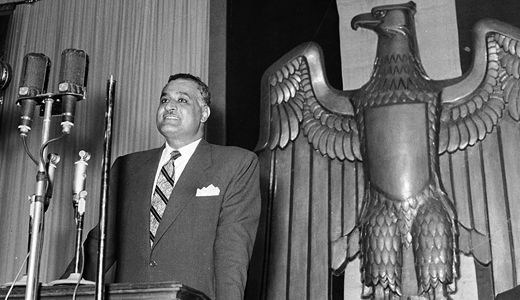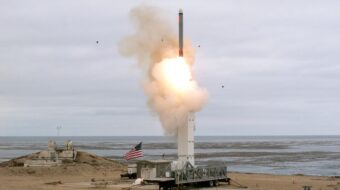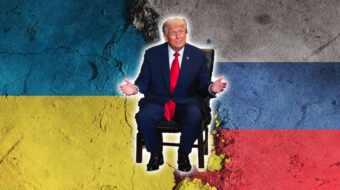
TORONTO — The grand illusion is that documentaries are more honest and truthful than fiction or narrative films. But just take for example Michael Moore’s films that some have always challenged for their accuracy and fairness. While defending a certain point of view, films can alter, transform and manipulate truth — just in the editing process alone. Like all media — radio, TV and print — editors (directors) make decisions on what to add and what to leave out. What’s added may be truthful, but what’s left out is still part of the truth.
If you watched the impressive and well-funded Evgeny Afineevsky documentary that premiered at the 2015 Toronto International Film Festival about the recent battles in Ukraine, Winter on Fire: Ukraine’s Fight For Freedom, you would get the impression that the heroic democratic-minded people in Kiev rose up to drive out a repressive dictatorial regime. What’s totally left out, of course, is any mention of the presence of large neo-fascist gangs of thugs, anti-communist Nazi-style fighters, who, far from democratic-minded, played a large role in ousting the legitimately elected Ukrainian President Viktor Yanukovych. The opposition forces represented extremely different political ideologies, although they shared the one purpose of undemocratically ousting the government leader who dared to ally with Russia rather than the European Union.
The United States always says it favors legal and democratic elections to make changes, not violence and war. But time and time again, we’ve seen the hypocrisy of “regime change”-minded militarists who supply money and weapons, and sometimes soldiers, to create instability, suffering and chaos to expand influence, power and profits. Mortar shells and military equipment found on the battlefield commonly bear the imprint of the United States. In almost every battle on Earth, America, the world’s largest seller of weapons (more than the rest of the world combined) sells weapons to one side or the other – and sometimes both!
What’s going on in the Middle East and Ukraine are complex issues, with the U.S. exploiting the legitimate forces of opposition to its own advantage. Creating chaos and replacing an unfriendly ruler with one who will do our bidding is the main objective. Didactic films like Winter on Fire are not telling the whole truth – who’s really fighting, and what’s at stake.
Another misunderstood and tragic event, the murder of 20 people in France centering around the satirical magazine Charlie Hebdo, is analyzed in a penetrating and well-made documentary entitled Je Suis Charlie. Interviews with staff members who witnessed the carnage are difficult to endure, as the pain continues. The film presents the extreme views shared by many writers of the often offensive comedy journal, who feel there is no limit to what can be written and drawn. Insensitivity toward and disrespect of the Muslim world resulted in the deaths of highly talented artists who apparently never expected this response. The extreme reaction of the Muslim killers, and the conscious intent here is to avoid the word “terrorist,” is inexcusable, but not totally surprising. Human beings can be provoked, insulted and pushed to their limits with words and pictures — thinking here of young students bullied in school, wives tormented by sadistic spouses, and the mentally ill denied treatment. This film fails to tell the whole story, why Muslims find Charlie Hebdo’s insults, drawings and actions unacceptable, and how a more humane understanding between us can be developed.
A Flickering Truth, a strange film from Afghanistan, was presented at TIFF, dealing with the preservation of the cinema in a land devastated by war and upheaval. In an abandoned warehouse in Kabul, stacks and stacks of decaying film cans house a cinematic history that is almost totally unknown to the rest of the world. As the Taliban considers film a decadent Western art form, it’s not an easy task for the director of Afghan Film, Ibrahim Arify, to preserve and restore a treasure chest with limited resources. With the help of the elderly Uncle Isaaq Yousif, who has lived in the building for over 30 years, the task of bringing back to life images from a long and turbulent history, is rewarding and often shocking. The world has never seen footage of the gruesome killing of President Najibullah, the pro-Soviet leader who tried to pull the country out of backwardness in the 1980s. The visit of President Kennedy to Afghanistan was also documented, along with many other historic events. But also, popular films are slowly uncovered and restored, bringing back the joys of a bygone forgotten age in a land with a precarious future. New Zealand Director Pietra Brettkelly deserves praise for her fearless dedication in documenting this important story on film history.
An important doc, Nasser, comes at a critical time in Middle East history, as it offers a thorough study of the life of President Abdul Nasser [the second President of Egypt, serving from 1956 until his death in 1970.] — part of a planned “Modern Pharoahs” trilogy, eventually covering Presidents Sadat and Mubarak. Nasser’s political life ranged from a leader in the 1952 overthrow of the monarchy, the 1954 nationalizing of the Suez Canal and formation of pan-Arabism, co-founder of the Non-Aligned Movement, and the military leader of the losing side in Israel’s 1967 Six-Day War. What marks this film as above the ordinary is the fast-paced editing of stunning interviews with important historical figures from all sides of the issues – U.S. and Soviet diplomats, Muslim Brotherhood opponents, and Egyptian men and women who have dramatic stories to tell about one of the most complex and charismatic leaders in Egyptian history. Nasser is skillfully directed and narrated by Jihan El-Tahri, an Egyptian now living in South Africa, but with a strong heart for her homeland.
Another penetrating study from a country known for its exceptional documentary filmmaking, The Ninth Floor tells the story of an important chapter in Canadian race relations. You might not think there’d be issues like that in such a “white” country. But of course many immigrants and students come to the land of opportunity. Not having the formidable slavery issue to deal with, Canadians can still exert certain degrees of intolerance. And that was the case in Montreal in 1969 at Sir George Williams University. Director Mina Shum admits Canadians are racist, “but they feel the need to apologize for it.” It started when biology professor Perry Anderson appeared to unfairly grade the black Caribbean students lower than the rest, and soon developed into a series of events that convinced these students they were being treated as “the other,” and that they couldn’t’t go anywhere without being watched. Bukka Renne (Trinidad), Anne Cools (Barbados), Rodney John and Allen Brown were some of those involved in “The Case of the Black Students.” The film clearly outlines the differences between individual and institutional racism, and presents the positions of those who eventually took over the ninth floor computer room. The 14-day standoff resulted in a fire that caused extensive damage resulting in court trials and prison terms. Some were expelled from the country, and the entire sad chapter in Canadian race relations was erased from most people’s memories, until this film was made. The power of cinema!
The power of film as a recorder of history shouldn’t’t be discussed without mentioning two classic documentarists, Marcel Ophüls and Frederick Wiseman. TIFF has a section called Cinematheque, where gems from film history are brought back for repeat adulation. This year they re-played The Memory of Justice by Ophüls. Made in 1976, not distant from WWII and just after the Vietnam War ended, we find a curious juxtaposition of two wars examined for their brutality and tragedy. The first half of this 4½-hour film focuses on the Nuremberg Trial. In his signature direct cinema style, Ophüls allows the camera to examine the happenings, the actions and words of those charged with some of history’s most heinous crimes. No narration, voiceover or title cards – the film is all yours to interpret. And the second half does the same for America’s war in Vietnam – a mesmerizing, not long enough, penetrating study of chapters in history that should never be forgotten.
Frederick Wiseman, also a major practitioner of direct cinema (known also as cinema verité) is known for his examination of American institutions. Titicut Follies created a major stir in 1967 when he exposed abuse in a mental hospital, and his reputation hasn’t faltered since. In Jackson Heights focuses on the indefatigable Brooklyn community, teeming with activity, as people from all places on Earth, every gender, age, ethnicity and race, meet to figure out how best we can all live together. The over three-hour documentary pulls the viewer into the lives of people at all levels of the social strata – workers, immigrants, politicians, gay activists – all dealing with pressures brought on by a society increasingly run by greedy corporations and the rich, demanding ever more sacrifices from those who actually create the wealth in our nation. Before you realize it, you’re not watching a film, but participating in the grand struggle of humanity. It takes a skilled filmmaker to pull it off. It’s not at all a bad suggestion to go back and watch Wiseman’s and Ophüls’ contributions to the documentary art.
Photo: Still from Nasser. TIFF.










